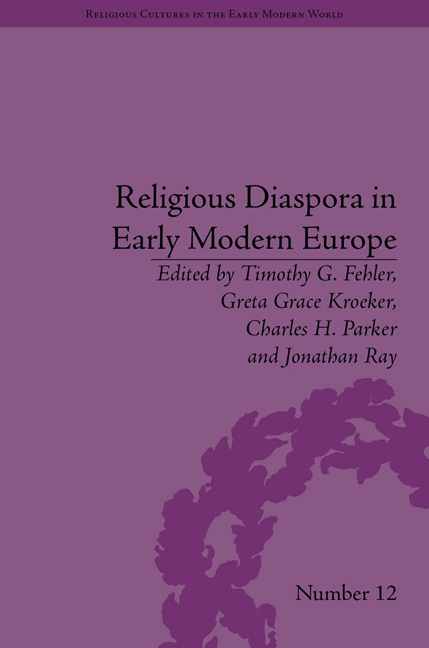Book contents
- Frontmatter
- CONTENTS
- Acknowledgements
- List of Contributors
- List of Figures
- Introduction
- Part I Tactics for Inclusion
- Part II Programmes of Restoration
- Part III Methods of Coping
- 8 Freedom as Exile: Michael Servetus and the Alumbrados
- 9 Coping with Poverty: Dutch Reformed Exiles in Emden, Germany
- 10 Anabaptist Migration to Moravia and the Hutterite Brethren
- 11 Chaos and Community: 1492 and the Formation of the Sephardic Diaspora
- 12 Displaced Intellectuals and Rebuilt Networks: The Protestant Exiles from the Lands of the Bohemian Crown
- Notes
- Index
11 - Chaos and Community: 1492 and the Formation of the Sephardic Diaspora
from Part III - Methods of Coping
- Frontmatter
- CONTENTS
- Acknowledgements
- List of Contributors
- List of Figures
- Introduction
- Part I Tactics for Inclusion
- Part II Programmes of Restoration
- Part III Methods of Coping
- 8 Freedom as Exile: Michael Servetus and the Alumbrados
- 9 Coping with Poverty: Dutch Reformed Exiles in Emden, Germany
- 10 Anabaptist Migration to Moravia and the Hutterite Brethren
- 11 Chaos and Community: 1492 and the Formation of the Sephardic Diaspora
- 12 Displaced Intellectuals and Rebuilt Networks: The Protestant Exiles from the Lands of the Bohemian Crown
- Notes
- Index
Summary
The themes of exile and migration have always been central to the history of the Jews. Indeed, it is the Jewish experience of dislocation, and the social and intellectual systems that they established in response to it, that stand as the model for the current field of diaspora studies. Paradoxically, however, the ubiquity of exile and migration in the broad sweep of Jewish history threatens to obscure the details surrounding the process of expulsion and resettlement of particular Jewish communities. The following study offers an examination of one such moment – the formation of the Hispano-Jewish (or Sephardic) Diaspora following the Expulsion of 1492 – and highlights some of the particular ways in which the processes of migration and resettlement came to shape the contours of their society. The various mechanisms employed by Sephardic refugees in order to cope with the obstacles of exile included the increased importance of sub-communal fellowships, the adoption of new ethnic identities, and a general dependence on social and political ties with Christians, Muslims and other Jews. The various ways that the Sephardim responded to the challenges of exile and migration throw into sharp relief the different goals and strategies of average Jews and those of their communal leaders. These differences, and the distinct and often competing communal structures that they produced, caution against the portrayal of early modern Jews as a monolithic entity.
- Type
- Chapter
- Information
- Religious Diaspora in Early Modern EuropeStrategies of Exile, pp. 153 - 166Publisher: Pickering & ChattoFirst published in: 2014

